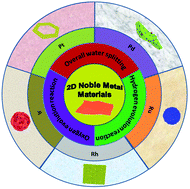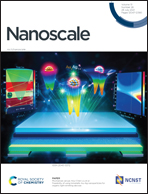Recent progress in water-splitting electrocatalysis mediated by 2D noble metal materials
Abstract
Two-dimensional (2D) nanostructures have enabled noble-metal-based nanomaterials to be promising electrocatalysts toward overall water splitting due to their inherent structural advantages, including a high specific surface active area, numerous low-coordinated atoms, and a high density of defects and edges. Moreover, it is also disclosed that the electronic effect and strain effect within 2D nanostructures also benefit the further promotion of the electrocatalytic performance. In this review, we have focused on the recent progress in the fabrication of advanced electrocatalysts based on 2D noble-metal-based nanomaterials toward water splitting electrocatalysis. First, fundamental descriptions about water-splitting mechanisms, some promising engineering strategies, and major challenges in electrochemical water splitting are given. Then, the structural merits of 2D nanostructures for water splitting electrocatalysis are also highlighted, including abundant surface active sites, lattice distortion, abundant surface defects, electronic effects, and strain effects. Additionally, some representative water-splitting electrocatalysts have been discussed in detail to highlight the superiorities of 2D noble-metal-based nanomaterials for electrochemical water splitting. Finally, the underlying challenges and future opportunities for the fabrication of more advanced electrocatalysts for water splitting are also highlighted. We hope that this review article provides guidance for the fabrication of more efficient electrocatalysts for boosting industrial hydrogen production via water splitting.

- This article is part of the themed collection: Recent Review Articles


 Please wait while we load your content...
Please wait while we load your content...